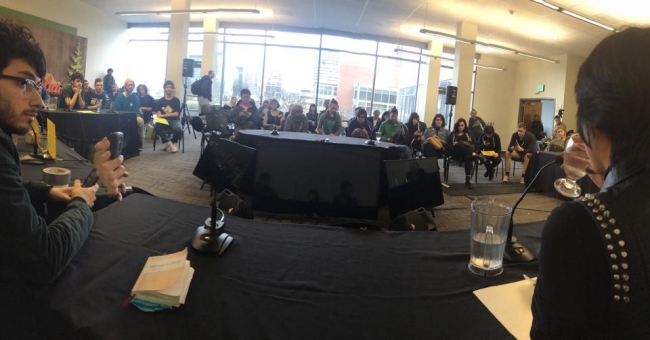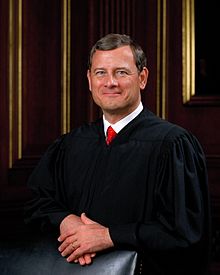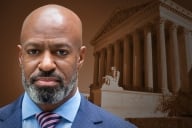You have /5 articles left.
Sign up for a free account or log in.

Portland State students occupy board meeting.
Some of the latest developments in the debates over race on campus include criticism of the chief justice of the U.S. Supreme Court, a new clothing line, a board meeting that was forced to move, unusual activism by medical students and a ban on the Confederate flag and swastikas.
Trustees Relocate Amid Protests
The board of Portland State University left the room in which it was meeting Thursday, deciding it could not continue its meeting as students were shouting at trustees, The Oregonian reported. The board finished its meeting via phone.
The university announced that it would meet one of the students' demands: that new meeting spaces would be created for black and Asian students on campus. (Latino students already have such a meeting space.)
But students said they protested because Portland State has not acted on other demands, such as taking away weapons from the university's police force, lowering tuition and responding more forcefully to threats of racism on the campus. Specifically, students say that a White Student Union Facebook page for the university may be real. Many such pages have appeared claiming to represent groups at colleges around the country, and most administrators consider these pages to be hoaxes. Portland State students said that the page claiming to be from their university is different from the others and should be taken more seriously by administrators.
After the board members left, the students moved to the tables where trustees sit to "occupy" the board meeting.
Pete Nickerson, chair of the Portland State board, told The Oregonian that he was disappointed to have to move the meeting. He said the board had planned to hear a report by the university's chief diversity officer on some of the issues of concern to students.
Taking on the Chief Justice
The U.S. Supreme Court last week heard arguments in a case that could determine the future of affirmative action in college admissions. Much of the discussion on the day of the arguments (and since) was about comments by Justice Antonin Scalia, who embraced the "overmatching" argument used by critics of affirmative action, saying that minority students may benefit from going to less prestigious colleges than the more competitive ones to which affirmative action helps them gain admission.
 But now another statement in the arguments is attracting more attention and criticism. That was a question by Chief Justice John Roberts (at right): "What unique perspective does a minority student bring to a physics class?"
But now another statement in the arguments is attracting more attention and criticism. That was a question by Chief Justice John Roberts (at right): "What unique perspective does a minority student bring to a physics class?"
Hundreds of physicists have now signed an open letter criticizing the chief justice.
The letter first notes the questions he didn't ask. "We note that it is important to call attention to questions that weren’t asked by the justices, such as, 'What unique perspectives do white students bring to a physics class?' and 'What are the benefits of homogeneity in that situation?' We reject the premise that the presence of minority students and the existence of diversity need to be justified, but meanwhile segregation in physics is tacitly accepted as normal or good. Instead, we embrace the assumption that minority physics students are brilliant and ask, 'Why does physics education routinely fail brilliant minority students?'"
As to the question from the chief justice, the letter says: "The implication that physics or 'hard sciences' are somehow divorced from the social realities of racism in our society is completely fallacious. The exclusion of people from physics solely on the basis of the color of their skin is an outrageous outcome that ought to be a top priority for rectification. The rhetorical pretense that including everyone in physics class is somehow irrelevant to the practice of physics ignores the fact that we have learned and discovered all the amazing facts about the universe through working together in a community. The benefits of inclusivity and equity are the same for physics as they are for every other aspect of our world. The purpose of seeking out talented and otherwise overlooked minority students to fill physics classrooms is to offset the institutionalized imbalance of power and preference that has traditionally gone and continues to go towards white students. Minority students in a classroom are not there to be at the service of enhancing the experience of white students."
What If Colleges Had Different Names?
 On several campuses this fall, black students have protested college names, statues and traditions that honor people from the past who, whatever their contributions to society, were racists. Many black students have expressed frustration over the way some administrators and alumni defend the use of these people's names.
On several campuses this fall, black students have protested college names, statues and traditions that honor people from the past who, whatever their contributions to society, were racists. Many black students have expressed frustration over the way some administrators and alumni defend the use of these people's names.
Philadelphia Printworks, which produces clothing that promotes activism, has unveiled a new line of clothing designed to promote pride in black leaders and to make people think about the importance of names of colleges -- names that appear on the clothing college students wear worldwide. The new School of Thought collection "imagines a different world where colleges and institutions have been established based on the philosophies of Marcus Garvey, Audre Lorde, Ida B. Wells, Harriet Tubman, George Washington Carver and James Baldwin. The collection represents the double consciousness experienced by African diaspora in America and creates a safe space for the praxis of liberation."
 Each page for ordering the clothing includes information about the thinker or activist honored. Here's the page for clothing for the University of Baldwin, for example. The imagined campus is appropriately located in Paris.
Each page for ordering the clothing includes information about the thinker or activist honored. Here's the page for clothing for the University of Baldwin, for example. The imagined campus is appropriately located in Paris.
And here's the page for Wells, which honors the journalist and civil rights leader, not the founder of American Express and Wells Fargo, for whom Wells College in New York State is named.
Medical Student Activism
Medical students -- with impossible schedules -- aren't known for being activists. But the current wave of protests over issues of race is starting to prompt demonstrations -- some organized by the group White Coats for Black Lives -- by medical students.
With #ActionsSpeakLouder written on tape over their mouths, medical students at the University of Rochester called for more study of health disparities by race and more work to promote the education and careers of minority medical students, The Rochester Democrat & Chronicle reported.
Other protests took place involving medical students in Chicago, Philadelphia and San Francisco, among other cities.
Ban on Confederate Flag and Swastikas
Kutztown University, part of the Pennsylvania State System of Higher Education, has announced new rules for decorations in dormitory rooms -- and the regulations include a ban in all cases of the Confederate flag and swastikas.
The policy states: "All decorations in common areas in the residence hall and apartments must take into consideration that obscene, distasteful displays which are demeaning to an individual's or group's race, ethnic, religious background and/or gender or ability will not be permitted and will be removed immediately, at the discretion of Housing and Residential Services. The Confederate flag and swastika are NOT permitted in any residence hall, suite and apartment or student room." (Uppercase and bold emphasis is per the policy.)
Confederate flags offend many people and many colleges that once themselves flew the flag or used it in various ways have stopped doing so. But many colleges have been wary of banning the Confederate flag in student rooms or private spaces out of First Amendment concerns. A George Washington University statement this year condemning all uses of the swastika led to criticism from Hindu groups and commentary in India, where the swastika is a holy symbol unrelated to Nazis.
A spokesman for Kutztown said he did not know of specific incidents that prompted the new policy. He said the university has received questions about the First Amendment implications of the policy, and is planning a legal review.








